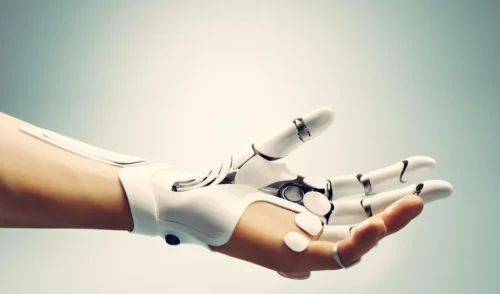- Optical-Electrodes or ‘Optrodes’ are sensors developed using liquid crystals and integrated optics technology.
- Optrodes are capable of measuring relatively weak nerve impulses of microvolt range.

Researchers at University of New South Wales, before the pandemic, had theoretically proved that sensors developed using liquid crystal and integrated optics technology – dubbed ‘optrodes’ – can detect nerve impulses in a living animal body. These optrodes use light instead of electricity to measure neural activity.
The team demonstrated that optrodes could be used to accurately measure neural impulses as they moved along a nerve fiber in a living animal. They connected an optrode to the sciatic nerve of an anesthetized animal. The nerve was then stimulated with a small current and the neural signals were recorded with the optrode. They demonstrated that nerve impulses – which are relatively weak and measured in microvolts – can be registered by optrode technology. The next step will be to scale up the number of optrodes to be able to handle complex networks of nervous and excitable tissue.
“There’s still more noise in the optical one, but that’s not surprising given this is a brand new technology, and we can work on that. But ultimately, we could identify the same characteristics by measuring electrically or optically,” said Professor Nigel Lovell, Director of the Tyree Foundation Institute of Health Engineering and Head of the Graduate School of Biomedical Engineering.
There is a bundle of connection between the brain and the hand that divides into 5000 to 10,000 nerves that control the delicate operations of your hand. A chip with thousands of optical connections could connect to your brain, or someplace in the arm before the nerve bundle separates, a prosthetic hand could potentially be able to function with much the same ability as a biological one.
“In our devices, if there is neural activity, its presence influences the orientation of the liquid crystal which we can detect and quantify by shining light on it. It means we don’t extract current from the biological tissues as the wire electrodes do. And so the biosensing can be done much more efficiently,” said Professor François Ladouceur of UNSW’s School of Electrical Engineering and Telecommunications.
Reference: “Liquid crystal electro-optical transducers for electrophysiology sensing applications” by Amr Al Abed, Yuan Wei, Reem M. Almasri, Xinyue Lei, Han Wang, Josiah Firth, Yingge Chen, Nathalie Gouailhardou, Leonardo Silvestri, Torsten Lehmann, François Ladouceur and Nigel H. Lovell, 10 October 2022, Journal of Neural Engineering.
DOI: 10.1088/1741-2552/ac8ed6









